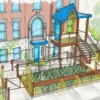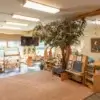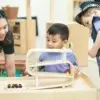The journey of learning begins long before a child enters elementary school. In these early years, the environment profoundly shapes a child’s heart and mind.
Through intentional design, learning spaces play a fundamental role in fostering well-being and sparking curiosity from the very start. This conviction reflects the philosophy that the environment itself acts as the “Third Teacher,” a concept coined by Loris Malaguzzi of the Reggio Emilia approach. The space significantly impacts a child’s development, and a leading study by the University of Salford (2015) confirms this, suggesting the physical characteristics of a classroom can enhance student learning by up to 25%.
This foundational importance is precisely why early learning environments demand a completely different design philosophy than their K-12 counterparts—and why simply scaling down K-12 furniture is insufficient.
The Flaw in the “Scaled-Down” K-12 Model
The assumption that one can simply shrink K-12 furniture to fit a preschool setting overlooks the profound developmental and sensory differences between these age groups. The requirements extend far beyond mere scale; early learning demands furniture that is thoughtfully tailored to support children’s holistic physical, emotional, and social development.
Traditional early learning furniture often conflicts directly with these needs. For example, brightly colored, plastic, or metal tables and chairs create an institutional feel that can cause overwhelm and disconnect. Wild, bright colors can be taxing for the brain, contributing to a sensory overload that many children and teachers find distracting. When furniture is institutional and garish, it becomes the focal point of the room, rather than the learners engaging with materials.
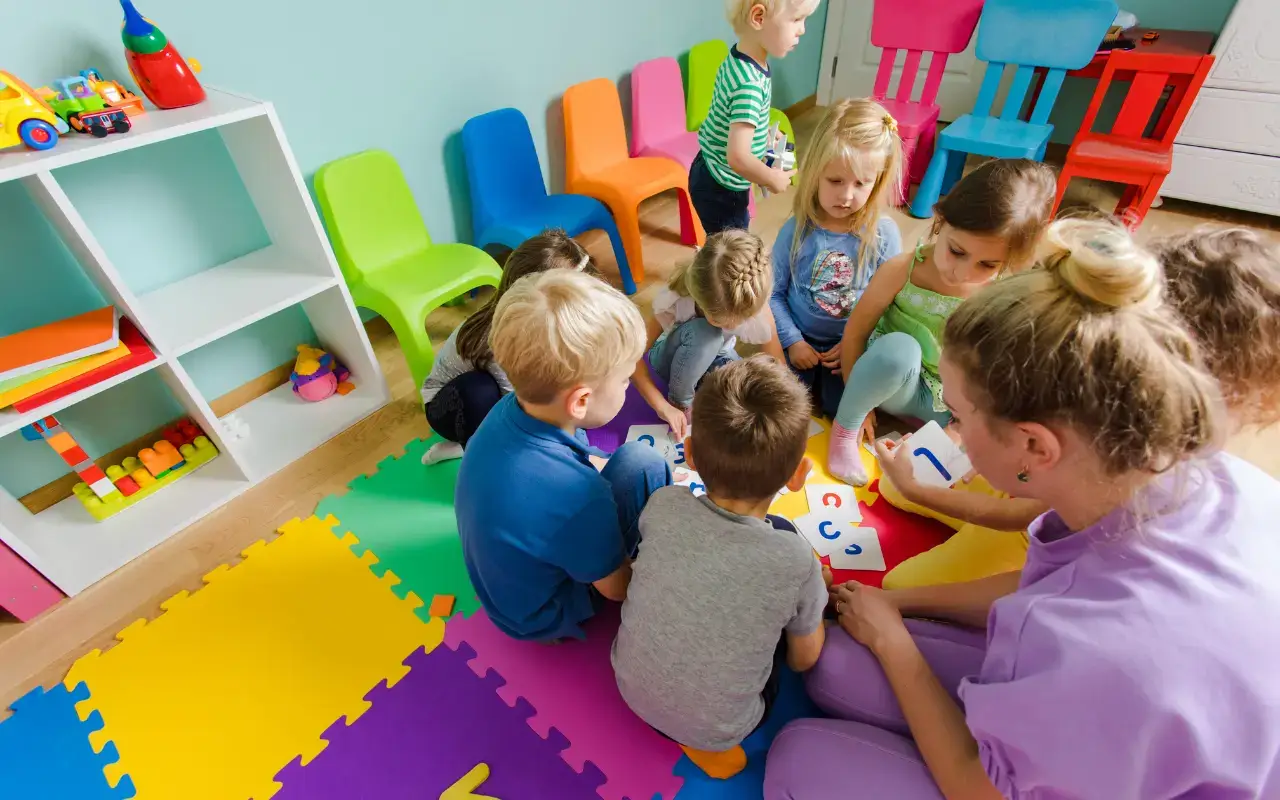
This problem is magnified when we consider that young children spend over 90% of their time indoors. As we’ve detailed in our article, “Indoor Air Quality: Why it’s Critical for Healthy Learning Environments,” the air inside a learning space can be more polluted than the air outside. This makes the physical materials themselves a critical concern. Most traditional furniture options are made from composite board, laminate with edge-banding, which are primary sources of this pollution, posing risks of unhealthy off-gassing and toxic emissions. According to the National Institutes of Health, children are more susceptible to environmental toxins because their bodies are still developing. They have higher rates of exposure through behaviors like crawling and putting objects in their mouths, and their bodies are less able to break down and expel these toxins. Early learning spaces must intentionally counteract this, using healthy materials, softened edges, natural textures, and calming elements to support focus and well-being.
The Early Learning Alternative: Designing for Biophilia and Play
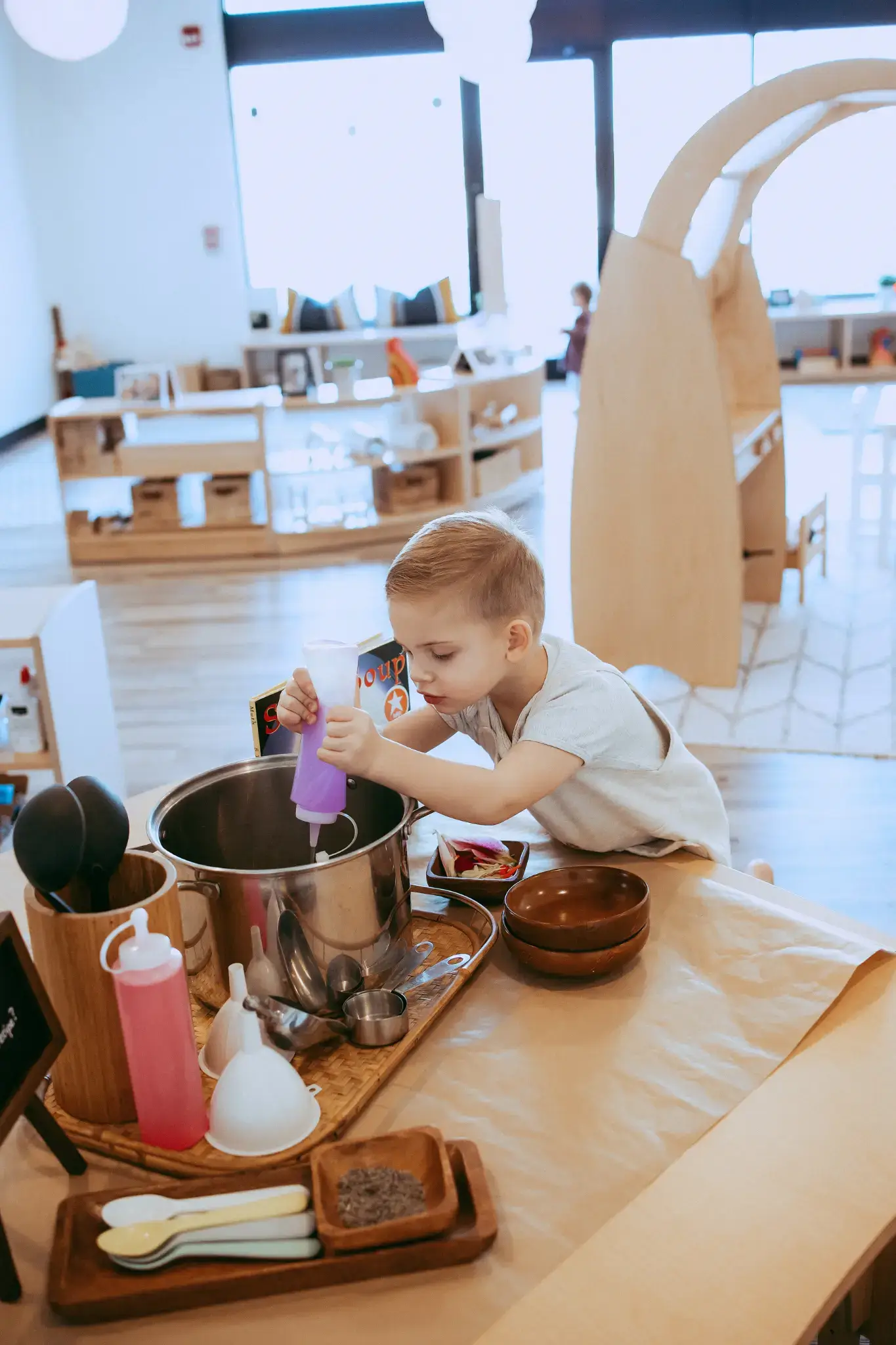
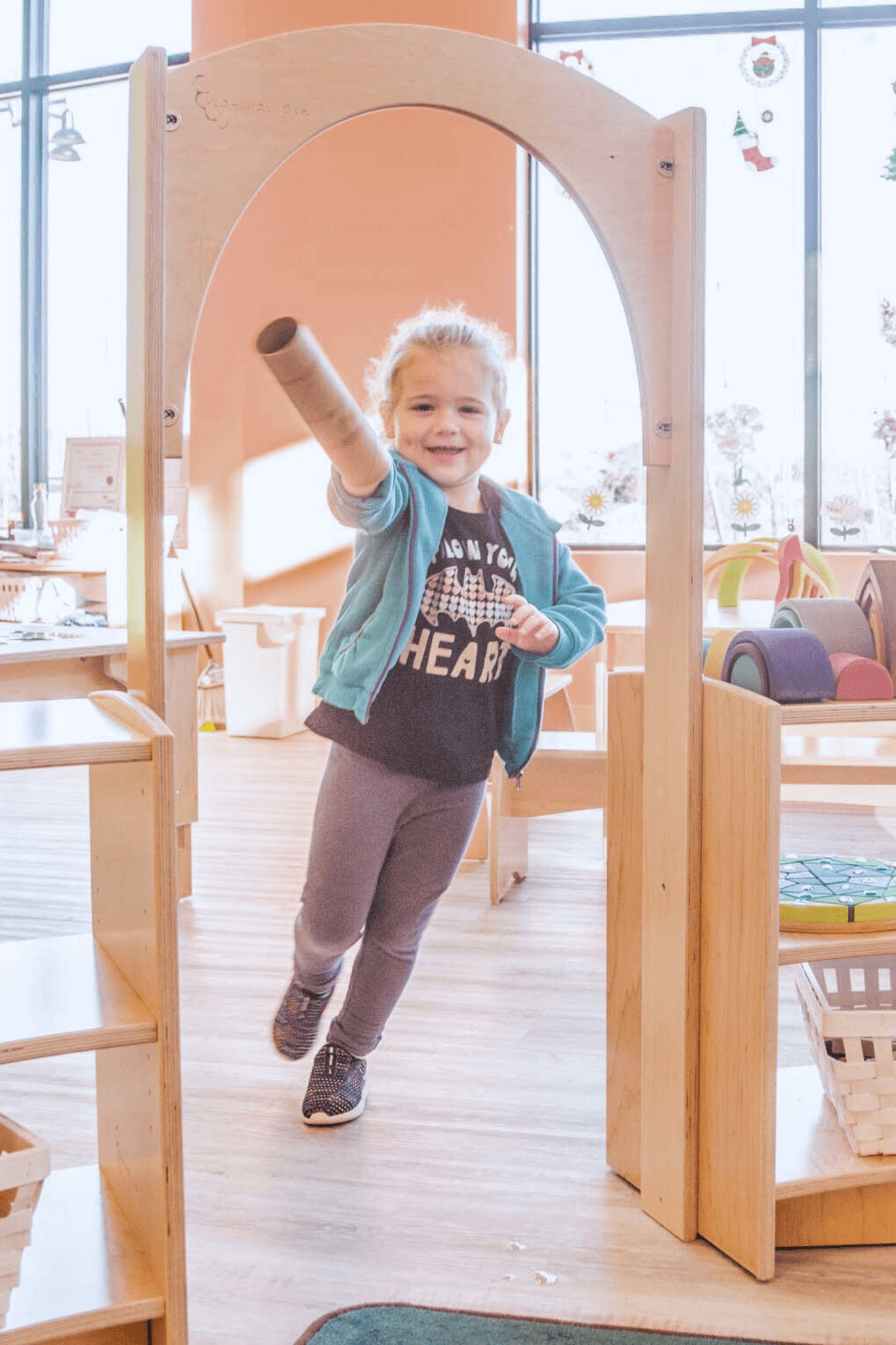
In stark contrast to the scaled-down K-12 model, preschool environments thrive on intentional design principles rooted in nature and play. Biophilic design connects people to nature by incorporating natural elements into the built environment—an approach that fundamentally impacts children’s cognitive, social, and emotional development. Research shows that integrating elements like wood, light, and plants can reduce stress, improve attention spans, and enhance learning outcomes. This is achieved using natural colors that reflect the outdoors, and furniture with rounded edges or organic curves to help bring the outside in. Environments rich in varied textures and neutral wood tones support brain development and foster a calm atmosphere allowing children to develop critical thinking capabilities and the self-directed focus that scaled-down models undermine.
This focus on nature goes hand-in-hand with the core pedagogy of early childhood: play. In these years, play is at the heart of everything a child does and helps build the infrastructure of their developing brain. It is not a break from learning; it is the learning. Through play, children develop critical future-ready skills like problem-solving, resilience, and communication, which prepares them for more complex tasks later in life.
This pedagogical need demands an environment that most K-12 furniture, designed for static, direct instruction, simply cannot support. To nurture critical thinking and creativity, early learning spaces must be flexible and agency-driven. Modular furniture and adaptable layouts are essential for encouraging dynamic group work, hands-on experiences, and honoring student choice, especially for our youngest learners.
Putting Principles into Practice: A Cohesive Solution
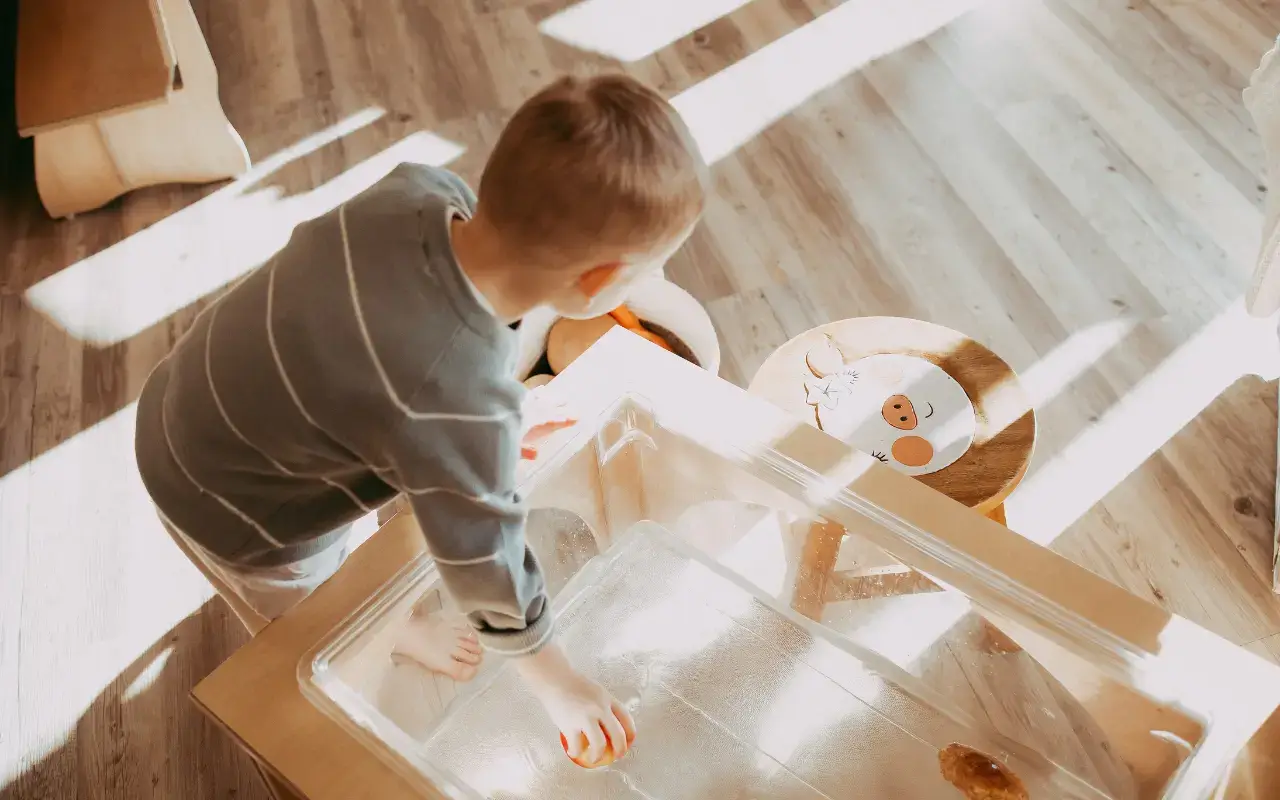
Natural Pod positions itself as a strong partner in early childhood education by creating solutions that directly embody these principles. Our focus is holistic: the furniture is intentionally designed as the “canvas” for learning, rather than the focal point. Our multi-functional, open-ended designs are built to support the development of critical future-ready skills and improve learning outcomes.
This commitment to well-being is absolute. Our solutions actively support healthy indoor air quality by being devoid of plastics, off-gases, or formaldehyde, and are CARB II compliant. Our dedication to healthy materials is evident in VOC measurements that are significantly under the GREENGUARD Gold Certification Standard, creating a non-toxic environment critical for all students, especially those with sensory sensitivities.
As a Certified B Corporation, we are committed to using business as a force for good. This philosophy is reflected in our value guarantee—our solutions are guaranteed for life, eliminating replacement costs and concerns about wear and tear. By choosing durable, FSC(R) Certified solutions, schools take a tangible step toward environmental stewardship, reducing waste and ensuring the protection of biodiversity.
A Deeper Conversation
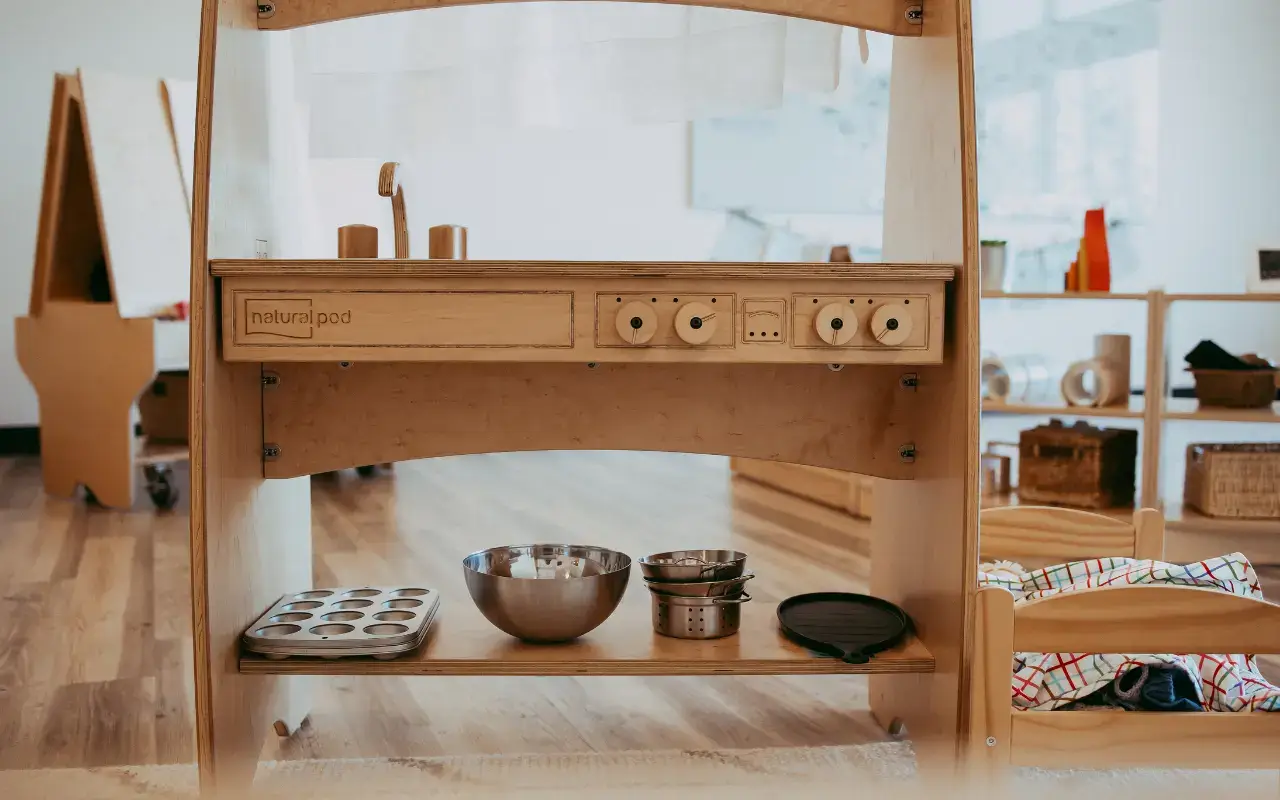
Ultimately, designing an early learning environment is about making a difference and empowering learners with healthy, inspiring spaces. It’s a lot like planting a tree: you have to focus on the ‘soil’—the nurturing conditions, the safety to explore, and the natural materials—that allow a child to develop deep roots, because those roots are what will support them for everything that comes later.
This approach shifts the focus from simply asking “what furniture do we need?” to engaging in a deeper conversation: “how can our investment in learning environments contribute to the long-term health and success of our students?” By embracing intentional design that fosters play, agency, and a connection to nature, schools invest in uncompromising, responsible quality that serves the community effectively for years to come.
About Contributing Author Kelly Rosensweet







